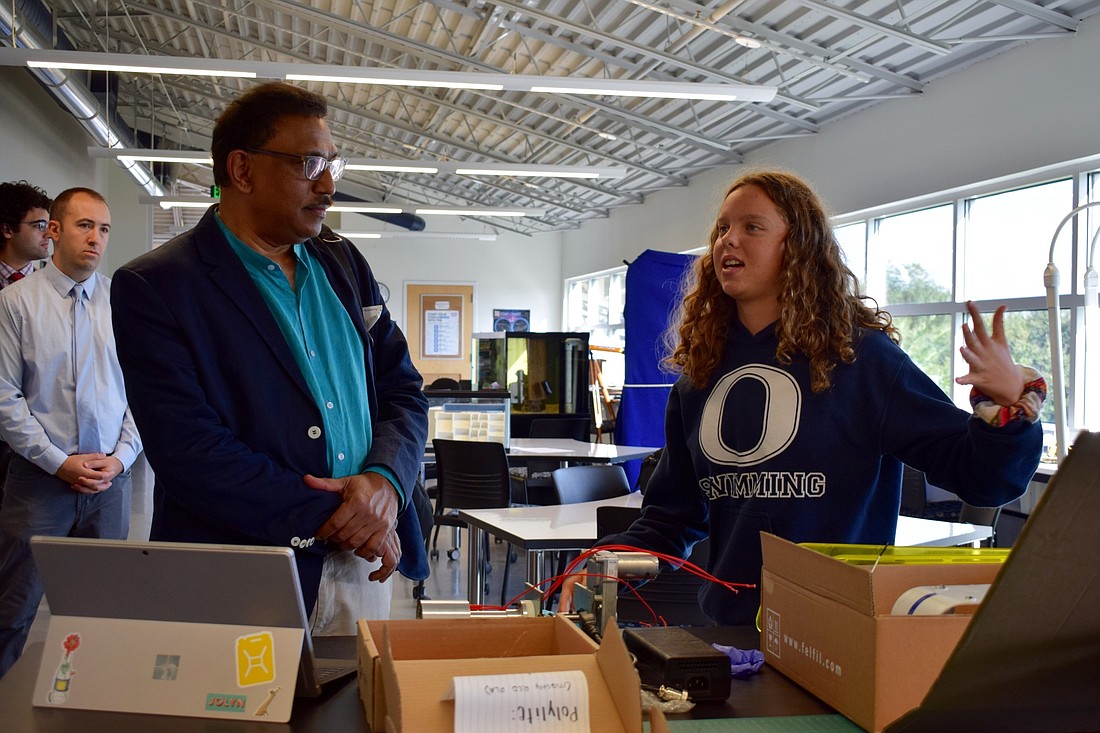- May 1, 2025
-
-
Loading

Loading

After hearing about Out-of-Door Academy junior Reece Whatmore’s work with oysters to help clean effects of red tide, Columbia University professor Joaquim Goes invited her to work in his lab in New York next summer.
Goes went to ODA on Oct. 30 to give a presentation on his work addressing green tide in the Arabian Sea by Oman. He said it is similar to red tide in the Gulf of Mexico.
“It was really cool to see how similar his work was to what we’re trying to accomplish and how a problem that we see is affecting the whole world,” Whatmore said.
Junior Supawadee Surattanont appreciated Goes’ presentation because “it showed us what our future could look like because their problem is a lot worse than ours right now.”
After the presentation, Goes listened to Whatmore and other ODA students explain what engineering class projects — which included oysters, robotics and virtual reality — they were working on.
Whatmore and Surattanont, who also was invited to work in Goes’ lab next summer, are creating oyster housing units, so the oysters can filter the water and eat red tide cells.
“That’s exactly what we want to do in Oman,” Goes told Whatmore.
The Oman government has asked Goes and his colleagues to find solutions to its green tide problem. He said he already was thinking of using oysters and mussels as part of the solution.
“It’s really exciting to hear his input and hopefully work with him and go to his lab,” Whatmore said. “If you told me when I started this I’d be talking to a Columbia professor who would invite me to his lab, I would be like ‘No, there’s no way.’”
Goes said he was impressed with the ODA students’ projects and jealous the students are tackling real-world problems in class because he didn’t have the same opportunities when he was their age.
“The school, it seems to me, builds confidence, not only among the students, but the parents feel confident that their kids can achieve something,” he said. “If you’re a parent, this is a huge burden off your back in making kids understand when they encounter real-life problems and how to solve them because it’s being taught in school.”
Both Surattanont and Whatmore were in awe of being able to share their project with a Columbia University professor and oceanographer.
“I’m just a regular high school student, and here I am explaining my project to this scientist guy that’s actually interested in it,” Surattanont said.